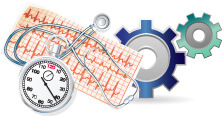Innovation and improvements in the medical device industry continue to advance at increasing speeds. The goal is to get high quality products to market as quickly as possible, and the faster companies are able to do this, the greater the chances that people will benefit from the innovations.
Many factors are driving medical device innovation and improvement including the following:
Improved FDA Approval Process
The FDA approval process within the medical device industry was long believed to be unnecessarily complex, unpredictable, and inefficient. In 2012, the FDA aimed to change that perception and “announced a new Medical Device Innovation Consortium (MDIC) charged with simplifying the process of designing and testing new technologies. With input from industry, government, and other nonprofit organizations, public-private MDIC will prioritize the regulatory science needs of the medical device community and fund projects to streamline the process.” (Source: ASME)
Processes are Increasingly Automated
Replacing manual assembly processes with automated solutions ensures maximum efficiency while reducing costs. Automation robots provide better process control and improve workplace safety by completing the most dangerous tasks. In the fluid dispensing industry specifically, automated technology can “speed assembly, reduce risks, and enable increased precision—all of which can help medical device manufacturers get better products in their customers’ hands faster.” (Source: MD+DI)
Health Care Reform
One revenue-raising component of the Affordable Care Act is the 2.3% medical device excise tax, which took effect in January 2013. There are a significant number of opponents of this tax who believe that the tax has negative consequences for the industry including smaller budgets to invest in research and development and lost jobs to offset the cost of the tax. Yet, others in the industry see it as an opportunity for improvement:
Ben Beckley, VP Account Directory at LehmanMillet said:
The 2.3% tax actually represents a much needed, albeit crude, lever to promote greater innovation and accountability among these companies… The former model of incremental innovation and me-too products that aren’t able to offer evidence-based outcome improvements will be driven out and investment money will flow to the true innovators. While it will take time for all of this to shake out, it is very good for the health of the industry and the population as a whole.
Marc Sirockman, Executive Vice President and General Manager at Artcraft Health has a similar opinion:
Medical device companies will need to become much more strategic in all aspects of their business model. Traditional practices will be pushed to the wayside to focus on devices that are innovative and proven to stand the test of time. Hospitals will be reimbursed for “doing it right the first time” and increasing the focus on healthy outcomes… Through strategic action and targeted education and awareness, the ramifications from the ACA can be offset and even increase profit margins.
While the medical device industry continues to face challenges, there is also encouraging evidence that the industry is moving in the right direction. For more information on improving your medical device capabilities, contact Fishman Solutions.
